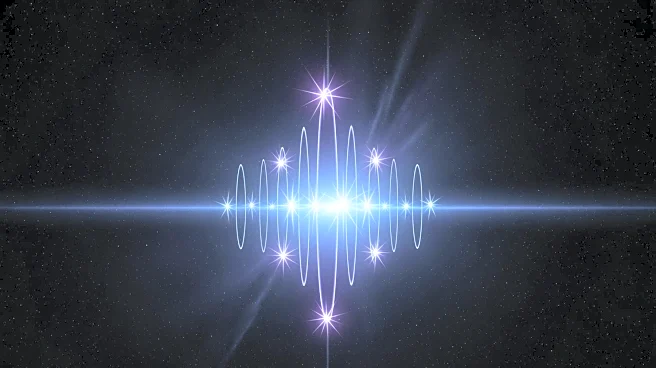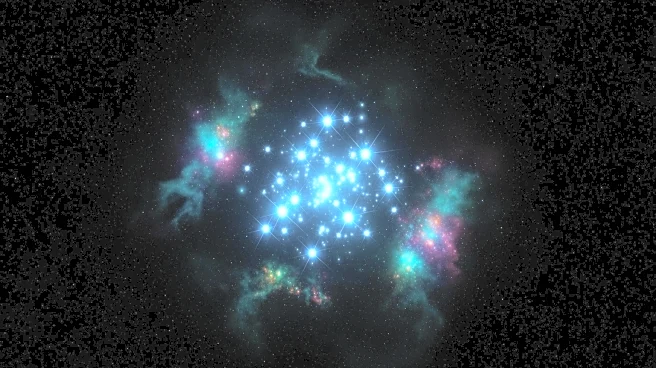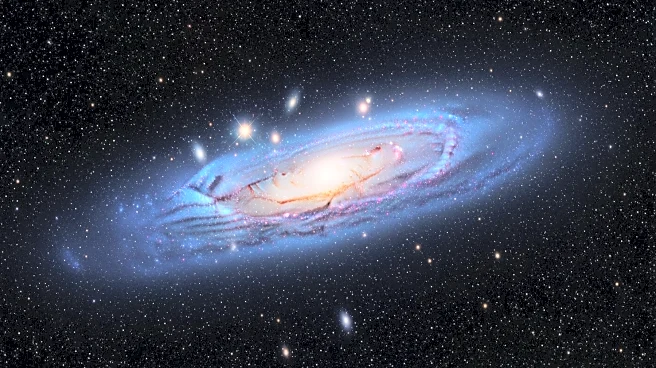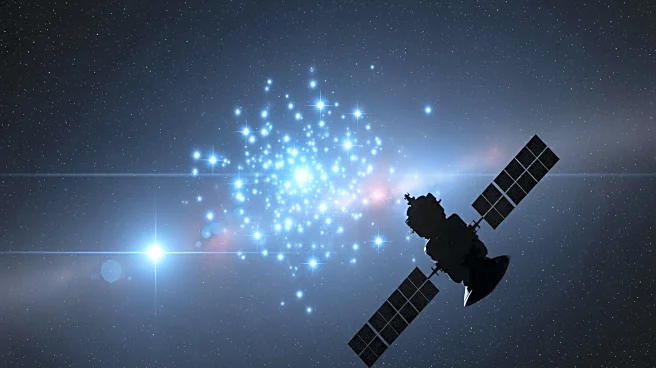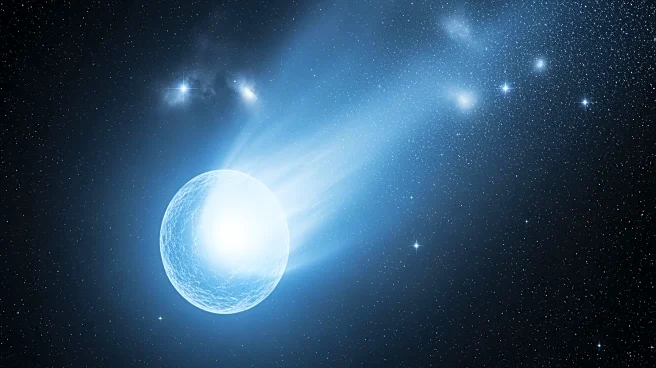What's Happening?
NASA's High Angular Resolution X-ray Imager Science Analysis Group (Hi-ReX SAG) has made a significant discovery using data from the Chandra X-ray Observatory. The team detected X-ray emissions from young
stars in the Small Magellanic Cloud (SMC), a nearby dwarf galaxy. This marks the first time such emissions have been observed from stars outside the Milky Way. The SMC, visible to the naked eye from the Southern Hemisphere, provides a unique opportunity to study star formation and evolution. The discovery was made in a region known as NGC 602, which contains several star clusters, including NGC 602a, similar to the Orion Nebula Cluster. The findings were achieved by combining X-ray data with optical and infrared observations from the Hubble and Spitzer Space Telescopes.
Why It's Important?
This discovery enhances our understanding of star formation and evolution beyond our galaxy. By studying the SMC, astronomers can gain insights into processes that are difficult to observe in more distant galaxies. The ability to detect X-ray emissions from young stars in another galaxy opens new avenues for research into the life cycles of stars and the conditions that lead to their formation. This knowledge is crucial for developing comprehensive models of galactic evolution and understanding the universe's history. The findings also demonstrate the effectiveness of combining data from multiple observatories to achieve groundbreaking scientific results.
